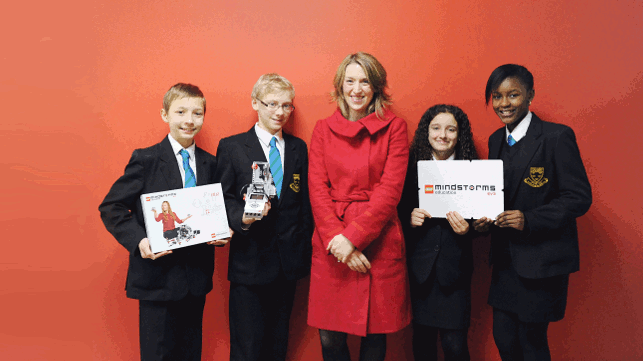Think of underprivileged children and you probably imagine gangs of inner city hoodlums up to no good on street corners, no intentions of setting themselves a path in life.
However, this is often far from the truth and there is one initiative that wants to help unlock the potential that lurks within every school child.

Salford’s Albion Academy was one of the schools chosen for the Elite Engineering Programme pilot scheme
The Elite Engineering Programme (EEP) was spearheaded by Helsingston Foundation, a privately funded foundation founded by philanthropist and Oxford Alumnus, Graham Sharp, in 2008 to enable high-performing sixteen and seventeen year olds from state schools and colleges to experience higher education at its best.
The Programme has since grown and last year partnered with the Royal Academy of Engineers and LEGO Education, the toy manufacturer’s Education arm that, for over 30 years, has worked with teachers and educational specialists worldwide to bring subjects to life and make learning fun.
EEP’s single aim is to boost the number of talented young people in secondary school, many from underprivileged backgrounds, to consider pursuing careers in engineering.
It has chosen 25 schools to receive free LEGO Mindstorms Education EV3 resources to be used in the classroom.
More than just bricks, the EV3 series are fully programmable robotics that can be controlled and programmed in a variety of ways, giving students the tools to conduct exciting experiments and engineer their own ideas.
The EEP judges prioritise schools that would benefit most from the new resources, having set them challenges to assess the enthusiasm of the school and its teaching staff and how much community support has been shown for the application.
A five-year plan
Speaking with the Helsington Foundation it is clear that ‘underprivileged’ is not a term that carries any stigma, but which simply implies the need to develop and eke out the best from the raw potential.
“Some schools seem to be better structured and have a bit more funding than others, others are in poor areas where you don’t get additional support from parent groups and so on and so forth,” says Derek Walters, a key advisor at the Helsington Foundation on its education projects.
“They do lack resources, and EEP coming together with LEGO have been able to put that resource within the schools.
“Hopefully the teachers will marry the kits with subjects like maths and IT, and all the technological elements on the curriculum with this to help them raise standards, and encourage [pupils] to look at engineering as a serious career prospect.”
This is the pilot scheme of a five-year plan, in which the scheme aims to grow to engage some 350 schools and over 60,000 children.
“One would like to think that a high percentage of them would then specialise in core subjects — maths, physics etc. — then give them the grounding to go on and read engineering at university,” explains Walters.
Hands-on learning
LEGO is equally committed to the cause, although it sees itself as a tool to enable the project to work.
“Our priority is the classroom: we want to inspire not only the students but also the teachers,” states Gareth Boldsworth, marketing director at LEGO Education Europe.

The LEGO Mindstorms Education EV3 are robotics kits that can be fully programmed by the pupils
“We have some great assets that teachers and students can use that might inspire them to take a career path in engineering.
“When we were approached to become a partner in this we became very interested in what they were doing and what they wanted to achieve — we could complement that with our resources.”
Ultimately, LEGO has seen, through its many years of working in the education sector, that the toy often inspires children and can trigger them to follow a path into sciences or engineering.
“Sometimes, what we tend to find is that LEGO resources can light a passion in a student that you would never normally see before because it’s a hands-on way of learning,” describes Boldworth.
Future thinking
All partners in the project are convinced of the same issue, that the country needs more engineers, that it is moving into a knowledgebased economy and that strong sciences and engineering skills are needed as a core for the economy as a whole.
“They always seem to be the poor relations somehow,” laments Walters. “Compared to when you go to Germany, Italy, or certainly in the Far East, engineering has a genuine emotional status within society, and hopefully through projects like this we’ll be able to address this.
“Why 350 schools? Why not 700 or 1,000 schools? Why [sponsor] only 40-50 university places, why not 500 that are somewhat sponsored? We’re not confining our boarder thinking and long-term objectives to certain numbers, hopefully we can create the base.”
The need for 50 per cent more engineers is a spectre looming over all of design and engineering, but by uncovering the hidden talents of more children, the building blocks are in place to reverse this decline.
A look at how schools benefit from LEGO Mindstorms Education EV3
Default






